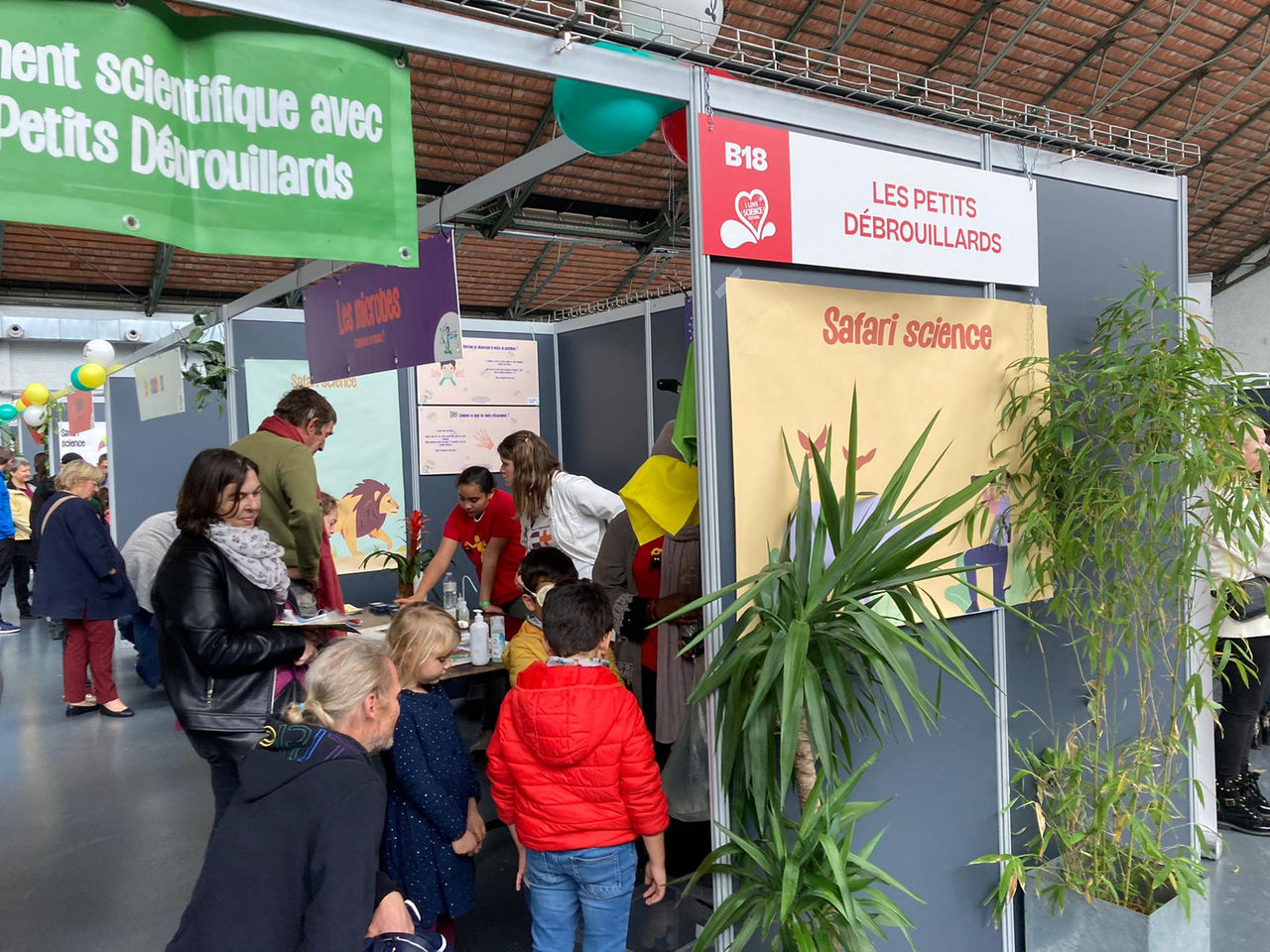Petits Débrouillards' Safari Sciences is composed of 13 stands that challenge visitors with a variety of activities. Awaken your curiosity with active, participatory and experimental education that you can easily reproduce using everyday equipment. Before your scientific exploration, you'll receive a passport to complete at each stand. Each activity lasts between 15 and 30 minutes.
- Activity 1 - Electricity: We’re all bright sparks!
Discover how batteries and lamps work, and learn about closed and open circuits through a game of skill! - Activity 2 – Hello, climate!? Are you OK?
Ask yourself questions about known and unknown climate change phenomena and test your hypotheses in real time. - Activity 3 - Biodiversity: up close and personal
Even underground, chemist Lavoisier's old adage holds true: "Nothing is lost, nothing is created, everything is transformed! From organic waste to earthworms and fertile soil, meet a family of earthworms and ask them questions so you can make the best compost at home! You can also take part in experiments on photosynthesis. - Activity 4 – The alchemy of colours
Discover secondary colours by mastering primary colours! What if colours were physical as well as chemical? - Activity 5 - Balance: our sixth sense
Who knows how to keep a brochette skewer upright? A few simple laws of physics will help you. - Activity 6 - Water: let its force be with you!
An intuitive, fun approach to Archimedes' thrust, the states of water, buoyancy and many other experiments. - Activity 7 - Magnetism: the Minotaur’s labyrinth
Magnetism and magnets have aroused curiosity since the dawn of time. Play with these intriguing little objects. - Activity 8 - Chemistry: frothing, swelling and jumping!
Discover the chemical reaction that takes place when you mix sodium bicarbonate and vinegar. It creates a gas (CO2) and make small explosions. - Activity 9 - Air: cushion the fall!
A parachute can save your life - but how does it work? Build a small parachute and compare it to free fall. Make colourful helicopters of different sizes to observe the movement of a fall! - Activity 10 – The Zinneke itinerary: being human – Vivre Ensemble
Through a variety of scientific experiments, this itinerary explores the link between categorisation, a cognitive process that is essential for the functioning of our brains, and the creation of stereotypes and prejudices applied to humans, which can lead to discrimination or racism. - Activity 11 - Microbes: partners or rivals?
Viruses, bacteria, fungi... what are they really? How can we get rid of them effectively? Here are a number of short experiments to give you a better understanding of the microscopic world of microbes. - Activity 12 - The brain: a fascinating organ
How does the brain work? What is it made up of? - Activity 13 - Waste pollution: what are you doing?
It's an established fact that waste pollution is harmful to our planet. But what are the solutions?
> FR-NL-EN / all ages / max. 10 people / continuous (15>30 minutes)

